No such thing as bad handwriting: Calligraphers want to spread the word, one free session at a time
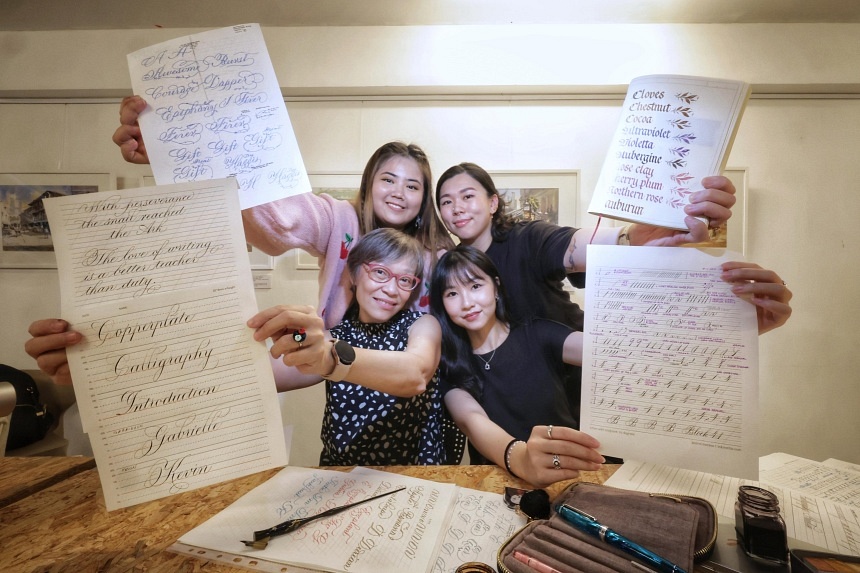
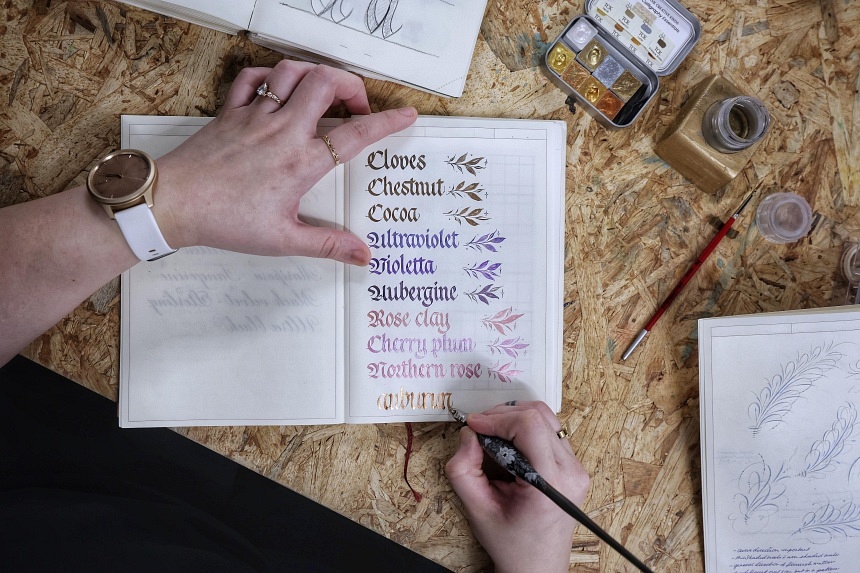

SINGAPORE – With their heads bowed over dining tables and pens in their hands, it was an unusual sight at a Food Republic outlet one Saturday morning, when a group of people gathered to nibble at, not food, but the art of writing.
Sitting at a table at the 313@Somerset foodcourt, a calligrapher demonstrated how to form the letters of a calligraphic script. On the table was an assortment of writing materials: paper, ink, nibs and nib holders.
Her expert hand traced brown ink across a sheet of paper, wielding her pen with impeccable precision to produce flowing strokes.
Every movement was deliberate – from the gentle pressure on the nib that formed thicker lines to the feather-light motion that produced delicate hairlines.
This gathering was part of a free initiative called Beginners’ Table, held every two months by a group of calligraphers who want to share their passion for the craft with newbies.
Most participants are young adults in their 20s, though there are those in their 40s as well.
Beginners’ Table started in 2016, prompted by a meet-up call posted by Mrs Dorothy Lim-Chew on the Calligraphers Singapore Facebook group, which has over 2,000 members.
A beginner at the time, the 57-year-old was looking for people to practise with.
“I attended a calligraphy workshop, but I needed to practise with guidance,” she said. “Practising with others provided motivation and gave me a chance to receive pointers from more seasoned calligraphers.”
Ten other calligraphers volunteered to help, and Beginners’ Table took off. At its peak, it saw about 70 people in a single gathering.
Then the Covid-19 pandemic struck and the meetings moved online. Physical meetings resumed in 2022 with smaller groups of not more than five, which the “anchors” – experienced calligraphers who guide the participants – found more manageable.
“When we had more than 10 at each table, we didn’t have time to address all the questions,” Ms Rachel Koh, one of the “anchors”, told The Straits Times. “At times, participants only learnt how to write a few letters after an hour.”
There has been an increase in demand for lessons since the pandemic, said Ms Leah Chong, who has been teaching calligraphy since 2016.
“What’s interesting is the shift in the type of participants – from hobbyists to serious learners,” she said. They are also seeing more students who want to learn calligraphy for work, such as bakers or secretaries.
“We even have overseas calligraphers flying in to improve their craft.”
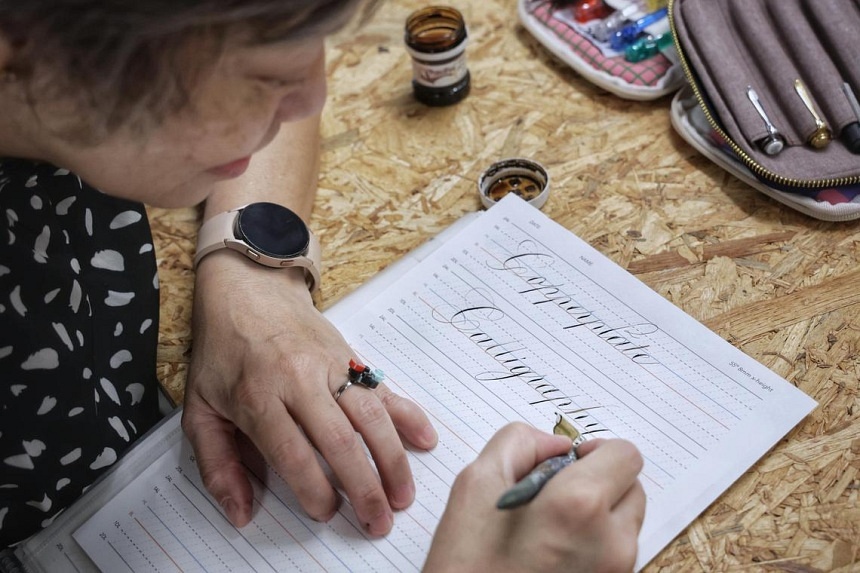
Mrs Lim-Chew agreed that there is demand for calligraphy workshops, “especially so with SkillsFuture and National Silver Academy funding”.
She currently teaches a course organised by the National University of Singapore Society, which has 13 students.
Social media has “accelerated the pick-up of modern lettering among young people”, said calligrapher Judith Perera-Lee.
“Quite a few beginners confess that they hate their bad handwriting,” she added.
The 36-year-old instructor said she loves watching beginners’ faces light up when they realise they can learn how to write beautifully. Some beginners start learning ahead of special events, like weddings, while others simply want to pick up a new skill.
Making calligraphy more accessible
Some participants who found their passion for calligraphy at the “taster” sessions from Beginners’ Table proceeded to pursue further studies.
Among them is Ms Alicia Wong, who started learning pointed pen calligraphy after attending a session in June 2018.
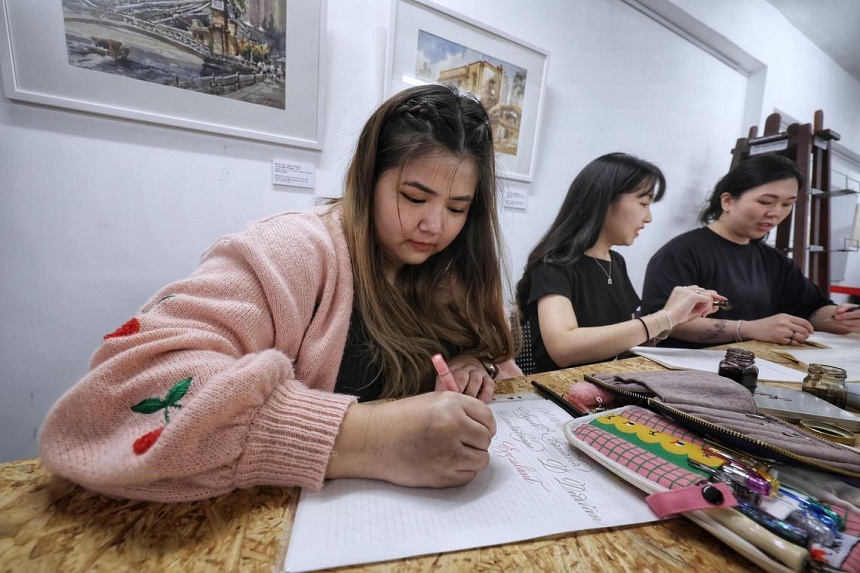
Pointed pen calligraphy – which uses a flexible, pointed nib – includes classic scripts like Copperplate. Other common calligraphy scripts include Italic and Gothic, which use a broad, flat-edged nib.
At the meetings, beginners are introduced to the basics of calligraphy, such as foundational strokes and letterforms. Experienced participants can also learn more advanced skills like flourishing, or embellishing letters.
“I started joining the sessions as a beginner, and now I’m working alongside people I really look up to,” the 25-year-old said. She is now one of the instructors at Beginners’ Table.
Ms Rachel Koh, 30, also credits Beginners’ Table for her deep dive into the craft that saw her becoming a full-time calligrapher. Volunteering to teach is her way of giving back to the community.
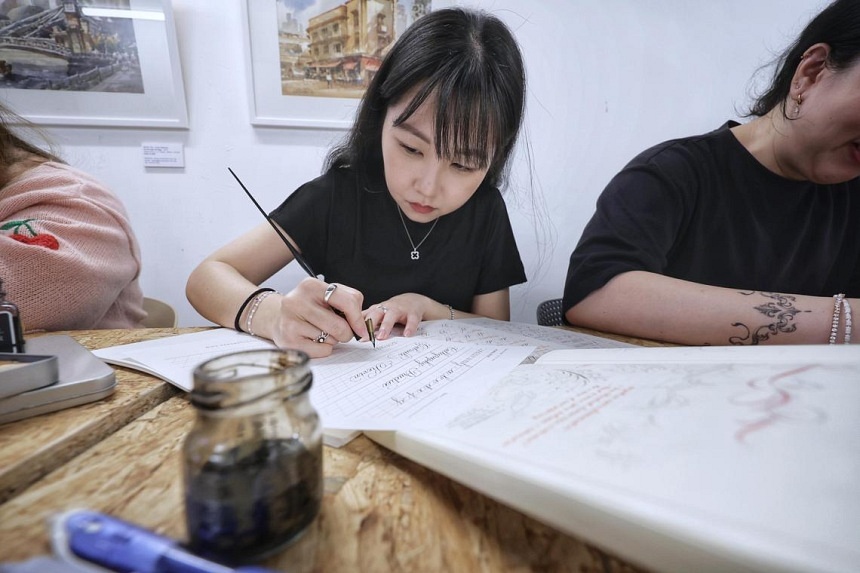
To make these taster sessions more accessible, they are held free of charge at foodcourts and occasionally the premises of retailers such as Overjoyed, an art supplies store, at Cathay Cineleisure.
The materials, contributed by calligraphers and sellers, are also free.
“Calligraphy can be a very expensive hobby,” said Mrs Lim-Chew. “You can pay a few hundred dollars for a course and you might not even like it.”
A set of starter materials costs between $15 and $25, but high-end materials like handcrafted nib holders can sell for hundreds of dollars.
Fees for classes offered by local calligraphers and institutions usually start at about $400.
Beginners’ Table aims to lower the entry level, allowing people to try calligraphy before making a serious commitment, she noted.
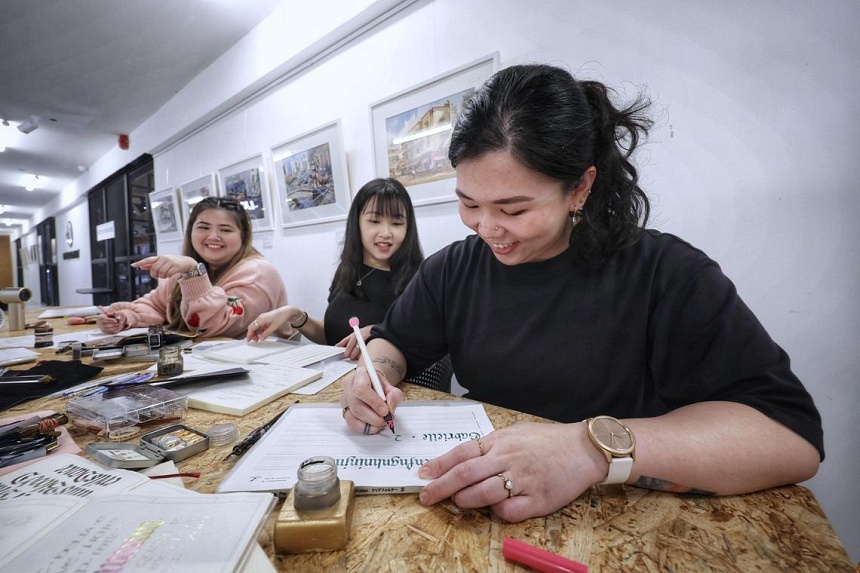
‘Pouring their hearts out’ over paper and ink
The sessions have attracted a range of people – from enthusiasts looking for connections to those trying to find an outlet for stress.
Due to the relaxed environment, some participants “end up pouring their hearts out” over paper and ink, said Mrs Lim-Chew.
She estimates 30 per cent to 40 per cent of participants are regulars.
Ms Tan Su Sian, a 31-year-old calligrapher and tattoo artist, advised beginners to try different instructors to find one who resonates with them, and to bear in mind that they do not need to be good at it.
“You just have to enjoy it,” she said. “Seeing new people get that spark in their eyes is very heartwarming.
“It really helps keep the passion for this craft alive.”
Join ST's Telegram channel and get the latest breaking news delivered to you.






No comments:
Post a Comment